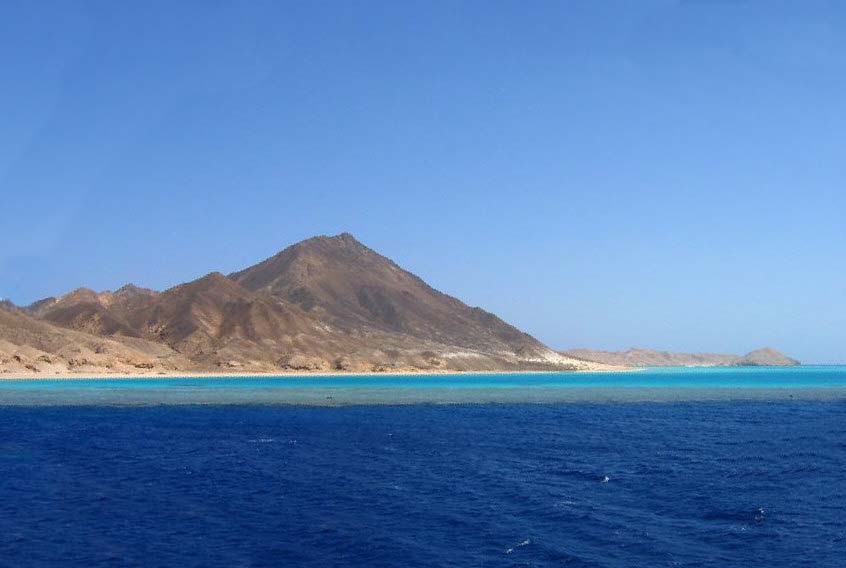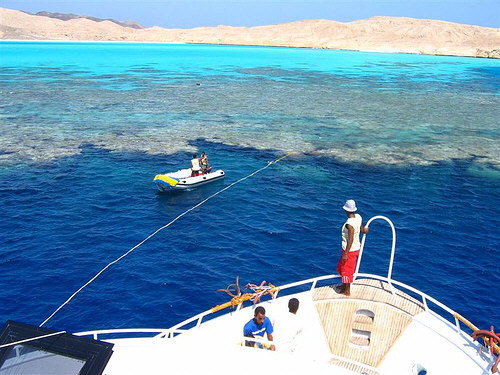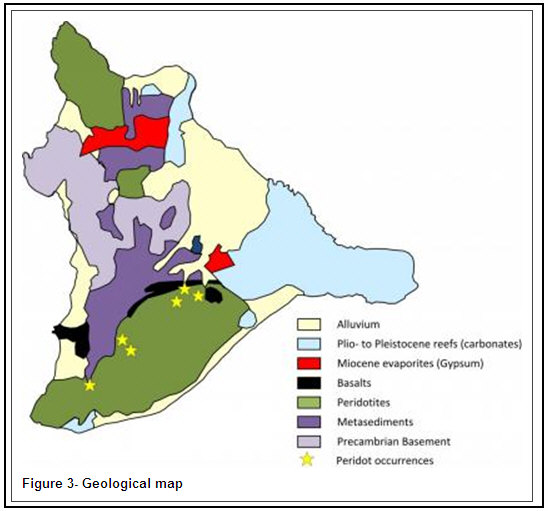

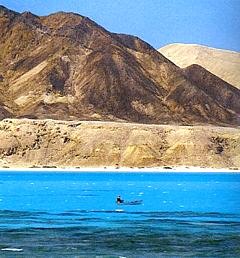
Main Peridotite Hill on Seberged Island Photo Source : unknown
Coordinates : 23°36'N , 36°11'E : Seberged (Zabargad) Island, Red Sea, Egypt
To see Seberged island on Google Earth, please click here.
Seberged is the island with the many names. This island was known in antiquity as Topazios and later as Saint Johns Island. Nowadays it is known as Seberged or Zabargad with occasional spellings as Zebirget or Zabirgad. While Seberged
is only small in size, it is an extremely interesting place in terms of history, geology and biology. In recent times it is also well known among divers, which come here to experience the thrill of a "bottomless" reef face at the outer margin of the island. But Seberged has much more to offer.
The Red Sea is a prime example for the tectonic break up of two continents, e.g. of Africa and Arabia,
resulting in a long and narrow ocean known as the Red Sea. But despite the predominant extensionional
tectonics involved, we often get alsocontradicting compressional elements of tectonics in the same areas.
In the case of Seberged the compressionional forces were strong enough to result
in a massive upthrusting of mantle material to the surface of the ocean, finally resulting in
the formation of two islands : Seberged and neighbouring small Shark Island.
Hence Seberged has a very complex geology with large slabs of mantle
derived rocks scattered in the island, consisting predominantly of fresh peridotites, which hosts lustrous green gemmy peridote crystals up to 10 cm and more. The
ancient egypts and greeks knew about these peridote crystals, and mined them
for many centuries and the island became famous under the name of 'Topazios'
in the ancient world. Later in christian times the name changed to 'Saint
Johns Island' before the island became forgotten for many centuries.
Seberged was rediscovered in the 19th century,
when geologists explored the old mines and found interesting nickel deposits,
which were later mined in the Nasser era around 1960. Recently the diving community "discovered" Seberged
and the beautiful reefs surrounding the island, steeply rising 500 m out of oceans depth.
And modern geologists became aware of the unique geology on the island which allow a rare opportunity
to investigate fresh and unweathered mantle derived rocks.
I had the privilege to have a short visit to remote Seberged in 1994. We
visited the remains of the ancient mines and admired the beauty of the
turquoise lagoon surrounding the island. Of course we also looked for peridote.
We found some small gemmy crystals, mere leftovers of century long mining and hand sorting. But we also
saw large opaque olivine crystals in situ embedded in more massive peridotite
rock with about 1 meter size ! The crystals are typical "olive" green and display
a prismatic habitus. They seldom show idiomorphic crystal faces, but are
clearly individual crystals of remarkable dimensions. Pitty, that I didnt
took any photos of the crystals. Maybe next time...
For more infomation please read an expedition report to Seberged in 1980, written by Peter Bancroft and published 1984 in his famous book "Gem & Crystal Treasures". here , or go to a new excellent article about the mineralogy and mining history of Seberged by Olav Revheim at Mindat here.
Crystals up to 1 meter size, gemmy crystals up to
2o cm, apparenlty formef by late stage hydrothermal
fluids, are reported Several upthrusted blocks of fresh unweathered upper mantle peridotite occur on the island, embedded
into a complex faulted metamorphic sequence. The peridotite crystallized in situ in the upper mantle region and was
subsequently uplifted to its present location.
Seberged Island is not easily accessible. While the outer reef is a popular diving destination, the island as such is considered an environmental protected zone. Seberged presents an unique opportunity to study fresh upper mantle rocks and their related mineralogy.
Peridote Crystal from Seberged Island
Photo Source : BANCROFT, P.(1984)
Seberged Ahoy - first glimpse of the island Photo Source : lms_namaste on flickr.com
View of the central peridote hill with light brown reef and turquoise
lagoon in forefront.
Photo Source : lms_namaste on flickr.com
Dive grounds along the "bottomless abyss" - a reef going straight down for 500 meter
Photo Source : lms_namaste on flickr.com
Geological Map of Seberged Island
Source : Olav Revheim (2014) see main text
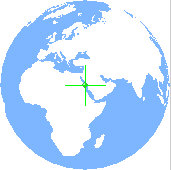
Mineralogy :
Olivine / Peridote / Forsterite
Crystal Size :
Geology & Origin :
Current status :
Remarks :
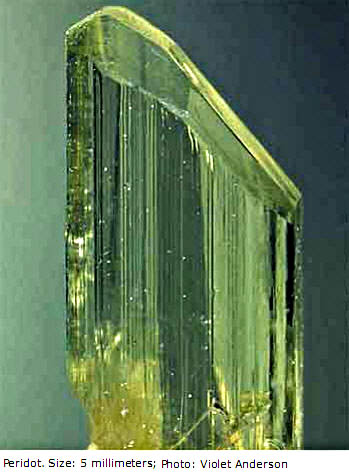
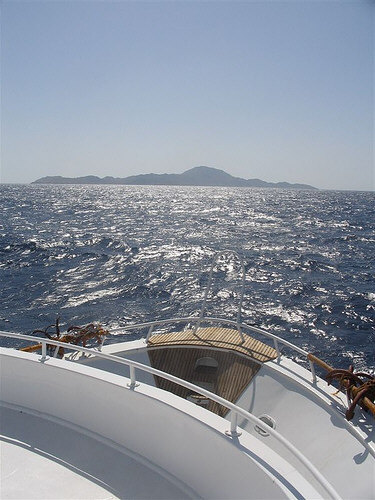
and its peridotite hills
